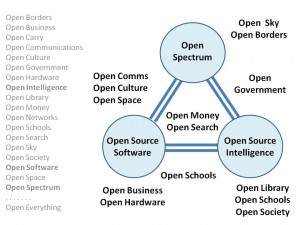This concept first developed as an “information continuum” from described in 1992 as being from schoolhouse to White House, and then in 1993 covering nine elements as shown below.

From there, for General Peter Schoomaker at USSOCOM, it was described as eight segments, treating the Internet as a separate entity.
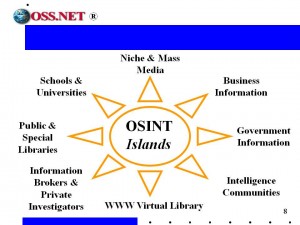
It matured when Alvin Toffler and Robert Steele visited DIA for lunch and came away understanding that DIA (at the time) wanted absolutely nothing to do with anything other than military intelligence.
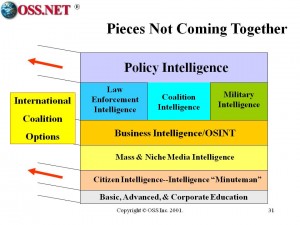
From there the concept evolved to seven tribes, with media and non-governmental organizations as one “ground truth” tribe.
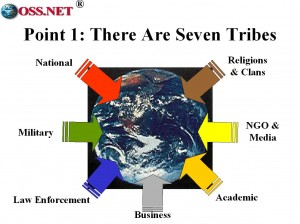
2003 Information Peacekeeping & The Future of Intelligence: The United Nations, Smart Mobs, and the Seven Tribes See especially the figures and Note 4. This chapter was followed by two articles, 2004 IJIC 17/2 Information Peacekeeping & The Future of Intelligence and 2006 IJIC 19/3 Peacekeeping Intelligence & Information Peacekeeping.
That latter mix did not work well so NGOs were broken out at the same time that Civil Society was reframed as including citizen advocacy, labor unions, and religions.
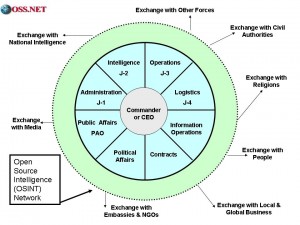
1998 Operationalizing IO in Bosnia-Herzegovina by LtCol Garry Beavers and Stephen W. Shanahan was very influential in conceptualizing a new global informatiion-sharing grid that was then presented to NATO/PfP and USSOCOM, where USSOCOM devised the following original view of inter-agency information sharing.
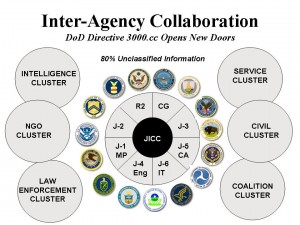
Below was developed as part of the thinking leading to the book,2006 INFORMATION OPERATIONS: All Information, All Languages, All the Time when the data entry challenge was fully understood as being impossible to address unilaterally.
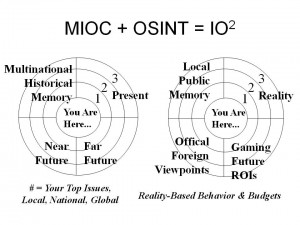
The logical end-state is Open Everything, where everyone, including enemies, has a voice that is heard. Two briefings on this point are 2009 Briefing: Open Everything at UNICEF in NYC and 2007 Open Everything: We Won, Let’s Self-Govern.
